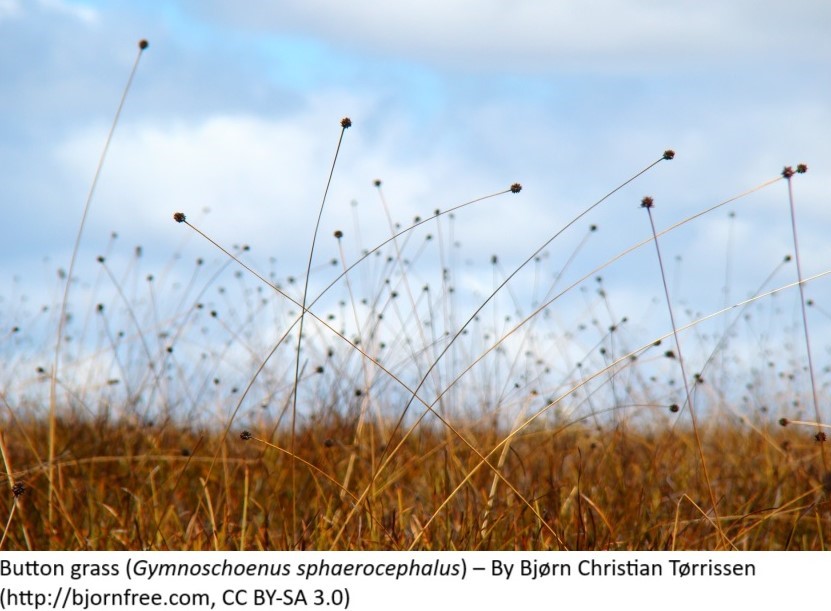Buttongrass as a pyrotechnic engineer.

Prof. Mumblebard claims: “Through evolutionary time, fire has controlled the structure of vegetation, determining whether a landscape is covered in grasses or trees. Indeed, under climates capable of supporting large plants, the main factor maintaining vegetation in a treeless state is wildfire. Lightning, the original spark of such fire, has been superseded: humans have been igniting their environment for thousands of years, making wildfires on most landmasses mainly anthropogenic. However, for fire to be effective in suppressing the woody plants in most terrestrial ecosystems, an annual dry season remains necessary. It stands to reason that vegetation cannot burn effectively unless desiccated to some degree, explaining why the rainiest climates – with precipitation in all months of the year – tend to retain wooded vegetation instead of the treeless grasslands typical of drier climates.”
Robin and the Honey Badger respond: “Contrary to popular belief, plants deploy fire rather than being victims of fire – with the adaptive benefits of this botanical engineering of fire applying particularly to nutrient-poor soils, regardless of climate. In the course of evolution, plants adapted to soils rich enough in phosphorus and certain trace elements to support herbivores tend to evolve into fire-retarders. By contrast, plants adapted to poor soils tend to promote fire rather than herbivory, thus facilitating the recycling of nutrients essential for all green growth. These processes are powerful enough to override seasonal desiccation. As one mechanism, species on poor soils have tended to evolve particularly combustible foliage, rich enough in flammable substances to ignite even in a green state. Indeed, extreme poverty of the soil has resulted in the evolution of plants capable of burning in cool, foggy and rainy climates lacking a dry season. The epitome of such vegetation is moorland, dominated by buttongrass, on peaty soils in Tasmania. Buttongrass moorland remains naturally treeless under climates with up to two meters mean annual rainfall and no dry season. The dominant hummock sedge is inherently flammable enough to burn even during a drizzle. Testimony to the continual sogginess of this environment is that – even on slight slopes – the role of detritivores has been taken over by burrowing crayfishes instead of the expected earthworms. Being razed frequently, yet at the same time being kept wet enough to be a permanent habitat of amphibious crustaceans, buttongrass moorland sorts cause from effect in the origin of vegetation. What determines whether nutrients are recycled by combustion, herbivory, or detritivory is soil fertility rather than climate. Buttongrass emerges as an ecosystem engineer capable of promoting both saturation and combustion – an apparently paradoxical combination – as part of its strategy of adaptation to extremely poor soils.”

Please join us here at the Bio-edge with your own comments. In the discussion below we encourage links to any evidence supporting either Prof. Mumblebard or Robin and the Honey Badger. Illustrations are welcome but please cite all sources or we may be forced under copyright to delete your comment.

